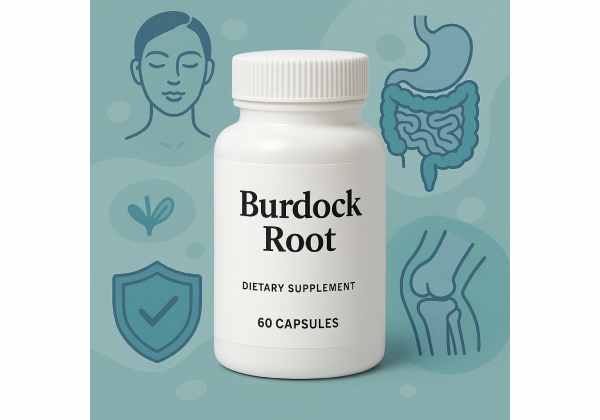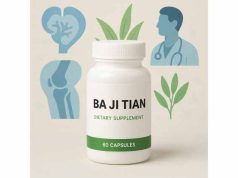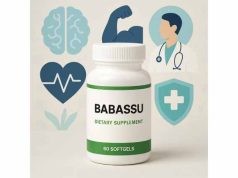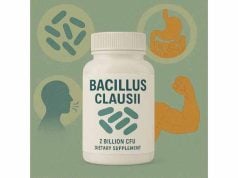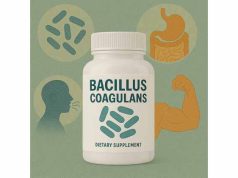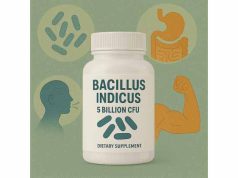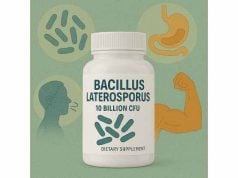Burdock root, known botanically as Arctium lappa, is a time-honored powerhouse in herbal medicine and traditional cuisine. Valued for its earthy flavor and potent therapeutic properties, burdock root is celebrated as a gentle yet effective detoxifier, blood purifier, and immune booster. Used for centuries in Eastern and Western herbal traditions, this humble root supports skin health, liver function, and digestion, and is now a popular supplement for modern wellness seekers. Whether enjoyed as a nourishing tea, taken as capsules, or incorporated into meals, burdock root offers holistic support with a safety profile that makes it accessible to most. This comprehensive guide explores how burdock root can help you, the science behind its effects, optimal dosing, and what to watch out for.
Key Takeaways
- Burdock root is a natural detoxifier that supports liver, kidney, and skin health.
- It’s rich in antioxidants and inulin fiber, promoting gut and immune function.
- Traditionally used to address skin conditions, support blood purification, and aid digestion.
- Generally well-tolerated, but may interact with certain medications or cause allergies in sensitive individuals.
- Choose reputable, contaminant-free sources for the safest and most effective results.
Table of Contents
- Burdock Root Basics: What It Is and How It Supports Wellness
- Understanding the Biology of Burdock Root: Active Compounds and Mechanisms
- Proven Benefits and Top Evidence-Based Uses for Burdock Root
- Burdock Root Safety, Tolerability, Possible Side Effects, and Interactions
- Optimal Dosage, Forms, Best Ways to Use, and Administration Tips
- Frequently Asked Questions About Burdock Root
Burdock Root Basics: What It Is and How It Supports Wellness
Burdock root (Arctium lappa), sometimes called “gobo” in Japanese cuisine, is a biennial plant native to Europe and Asia but now found worldwide. The edible root grows deep into the soil and is harvested for both culinary and medicinal uses, especially in its first year when it’s most tender and nutrient-rich.
History and Tradition
Burdock root has played a starring role in traditional herbal systems for centuries. In Traditional Chinese Medicine (TCM), it’s called “niu bang” and used to “clear heat and toxins,” supporting the skin and respiratory system. European herbalists prized burdock for purifying the blood, stimulating digestion, and treating skin eruptions. In Japan, it remains a culinary staple, valued for its earthy flavor and health benefits.
Culinary and Supplement Uses
Fresh burdock root features in soups, stir-fries, pickles, and teas. It’s now widely available as capsules, tablets, tinctures, powders, and even as a functional food ingredient in wellness snacks. Its popularity is due not only to its versatility, but also to its unique nutritional composition and mild taste.
How It Works in the Body
Burdock root’s core reputation as a “cleanser” and detoxifier comes from its ability to:
- Stimulate liver function and bile flow, aiding detoxification
- Act as a mild diuretic, supporting kidney filtration
- Support blood purification and healthy skin
- Offer antioxidant and anti-inflammatory effects
Nutritional Profile
Burdock root is rich in inulin (a prebiotic fiber), vitamins (notably C and E), and minerals (like potassium, magnesium, and manganese). It contains polyphenols and lignans, which are responsible for many of its protective properties.
Who Can Benefit?
Burdock root appeals to those seeking natural support for:
- Skin issues (acne, eczema, psoriasis)
- Digestive health
- Liver and kidney detoxification
- Blood sugar balance
- Immune resilience
Its gentle action makes it suitable for most healthy adults, but, as with all supplements, it’s best used with awareness and guidance for individual needs.
Understanding the Biology of Burdock Root: Active Compounds and Mechanisms
The remarkable effects of burdock root stem from a synergistic blend of bioactive compounds that work together to support detoxification, immunity, and metabolic balance. Here’s a deeper look at the plant’s primary constituents and their actions in the body.
Key Active Compounds in Burdock Root
- Inulin: A type of prebiotic soluble fiber that nourishes beneficial gut bacteria, helps regulate bowel movements, and supports healthy blood sugar levels.
- Polyphenols (arctigenin, chlorogenic acid, caffeic acid): Antioxidants that neutralize free radicals, reduce inflammation, and may protect cells from damage linked to aging and chronic diseases.
- Lignans: Phytoestrogenic compounds with anti-inflammatory and possible hormone-balancing properties.
- Tannins: Contribute to the root’s astringent, cleansing qualities.
- Essential oils and mucilage: Soothe mucous membranes in the digestive tract and respiratory system.
How These Compounds Work in the Body
- Detoxification Support:
Burdock root stimulates bile production, enhances liver enzyme activity, and promotes elimination of toxins via urine and sweat. Its diuretic effect helps flush waste, while its antioxidant content protects liver cells from damage. - Prebiotic and Gut Health:
Inulin feeds gut bacteria like Bifidobacteria and Lactobacillus, improving microbiome balance. This supports digestion, regularity, and immune function. - Anti-inflammatory Action:
Polyphenols and lignans in burdock root calm inflammation—especially in the skin and joints—by downregulating pro-inflammatory pathways and supporting tissue healing. - Blood Purification and Skin Benefits:
By supporting elimination and reducing inflammation, burdock root addresses the “root causes” of many skin eruptions, helping clear acne, eczema, and other conditions. - Blood Sugar and Metabolic Effects:
The inulin content helps blunt blood sugar spikes, aiding glycemic control and potentially supporting metabolic health in those with prediabetes or mild insulin resistance. - Antimicrobial and Immune Effects:
Certain burdock root extracts exhibit mild antimicrobial activity and support the body’s resilience against infections.
Synergy with Other Herbs
In traditional blends, burdock root is often paired with dandelion, yellow dock, or red clover to amplify cleansing and skin-supporting effects.
Bioavailability Considerations
Cooking, decocting, or fermenting burdock root enhances the availability of some nutrients and makes the fiber more digestible. Supplements in extract form can concentrate its benefits for targeted wellness goals.
Summary
Burdock root’s broad benefits stem from its role as a functional food and a “gentle mover”—helping the body cleanse, heal, and rebalance from the inside out.
Proven Benefits and Top Evidence-Based Uses for Burdock Root
Burdock root’s traditional reputation as a “blood purifier” and skin healer is supported by modern scientific findings. Let’s explore the main evidence-based benefits and the ways in which burdock root can elevate your wellness.
1. Skin Health and Detoxification
Burdock root is most famous for clearing up persistent skin issues such as acne, eczema, and psoriasis. Its detoxifying, anti-inflammatory, and antimicrobial effects help address skin flare-ups from the inside, making it a favorite for both herbalists and dermatologists. Users often notice clearer skin, reduced redness, and improved complexion after consistent use.
2. Liver and Kidney Support
The root acts as a gentle stimulant for the liver and kidneys, organs central to detoxification. Burdock enhances bile flow, supports the elimination of metabolic waste, and offers mild diuretic action, helping flush out excess fluids and toxins.
3. Digestive Health and Prebiotic Effects
Rich in inulin, burdock root feeds beneficial gut flora, aiding digestion and supporting regularity. It may also ease symptoms of indigestion, bloating, or mild constipation. Those seeking natural support for microbiome health often turn to burdock root tea or supplements.
4. Blood Sugar Regulation
The soluble fiber and low glycemic profile of burdock root can help stabilize blood sugar, making it valuable for people with insulin resistance or those managing metabolic health.
5. Immune Support and Anti-inflammatory Properties
Polyphenols and lignans enhance immune function and reduce chronic inflammation. Some research suggests burdock root may even help protect against certain infections, though more studies are needed.
6. Cardiovascular Wellness
By supporting healthy cholesterol metabolism and providing potassium and magnesium, burdock root contributes to heart health. Its antioxidant properties also protect blood vessels from oxidative stress.
7. General Detoxification and Wellbeing
Many users report increased energy, improved mental clarity, and a sense of “lightness” with regular burdock root use, especially during seasonal cleanses or after periods of overindulgence.
Modern Integrative Uses
Burdock root is included in herbal detox blends, immune formulas, and beauty supplements worldwide. Its broad-spectrum benefits make it a go-to for anyone looking to naturally support whole-body cleansing, healthy skin, and optimal organ function.
Burdock Root Safety, Tolerability, Possible Side Effects, and Interactions
Burdock root is widely regarded as one of the safest herbs in both traditional and modern herbalism. However, as with any supplement or medicinal plant, it’s important to understand its safety profile, possible adverse effects, and potential interactions, especially if you have underlying health conditions or take medications.
General Tolerability
For most healthy adults, burdock root is gentle and well-tolerated, whether consumed as a food, tea, or supplement. It’s commonly used in traditional diets across Asia and Europe with no reports of toxicity when eaten in moderate amounts. Allergic reactions are rare but can occur, especially in people with sensitivities to plants in the Asteraceae family (such as ragweed, daisies, or chrysanthemums).
Possible Side Effects
While uncommon, some individuals may experience:
- Mild digestive upset: Bloating, gas, or diarrhea may occur, especially if consuming large quantities due to the inulin fiber content. Starting with a small dose and increasing gradually can help your system adjust.
- Allergic reactions: Signs include rash, itching, swelling, or difficulty breathing. If you suspect an allergy, discontinue use immediately and seek medical attention.
- Electrolyte imbalance: Rarely, the diuretic effect of burdock may cause increased urination, potentially impacting potassium levels if consumed excessively or with other diuretics.
Drug and Supplement Interactions
Although burdock root is generally safe, it may interact with certain medications and should be used with extra care in specific situations:
- Diuretics (water pills): Burdock’s mild diuretic effect may add to those of medications, increasing the risk of dehydration or electrolyte imbalance.
- Diabetes medications: As burdock may help lower blood sugar, combining it with diabetes drugs or insulin could lead to hypoglycemia (low blood sugar). Monitor your levels and discuss with your healthcare provider.
- Blood thinners (anticoagulants/antiplatelets): Burdock root contains small amounts of vitamin K and may have a mild blood-thinning effect, so caution is advised if you’re on blood-thinning medications like warfarin.
- Lithium: As a diuretic, burdock may reduce the body’s ability to clear lithium, potentially leading to increased levels of the drug.
- Pregnancy and breastfeeding: While burdock root is used traditionally as food, there is insufficient research on concentrated supplements in pregnancy or breastfeeding. Avoid high doses or consult a healthcare provider before use.
Special Populations
- Children: Burdock is generally safe as food, but concentrated supplements should only be given under the guidance of a qualified practitioner.
- People with kidney issues: Due to its diuretic action, those with kidney disease should use burdock only with professional supervision.
Quality, Purity, and Sourcing Concerns
The safety of burdock root supplements is highly dependent on product quality. Only purchase from reputable brands that test for heavy metals, pesticides, and correct plant species. Contamination or adulteration is a risk with poor-quality, wild-harvested, or imported herbs.
Practical Tips for Safe Use
- Start with a low dose, especially if you have a sensitive digestive system.
- Increase slowly as tolerated, and drink plenty of water to support gentle detoxification.
- Stop use immediately if you notice any allergic or severe adverse reaction.
- Always check with your healthcare provider if you take prescription medications, are pregnant, nursing, or have chronic health conditions.
Summary
Burdock root’s excellent safety record and gentle action make it suitable for most people, but like all powerful herbs, it should be used with awareness and respect for your body’s unique needs.
Optimal Dosage, Forms, Best Ways to Use, and Administration Tips
Choosing the best way to incorporate burdock root into your routine depends on your goals, preferences, and individual health considerations. Burdock is uniquely versatile, available as a whole food, herbal tea, tincture, powder, and capsules.
Traditional and Culinary Use
- Fresh root: Wash, peel, and slice into soups, stir-fries, or pickles. 1/2 to 1 cup of fresh root daily is typical in culinary traditions.
- Cooked dishes: In Japanese cuisine, burdock (gobo) is sautéed, simmered, or pickled. Cooking softens the root and enhances its mild, earthy flavor.
Herbal Supplementation
- Dried root decoction (tea): Simmer 2–6 grams (about 1–2 tablespoons) of dried, sliced root in 2 cups of water for 20–30 minutes. Drink 1–3 times daily for gentle detoxification or skin support.
- Powder: 1–3 grams daily (about 1/2–1 teaspoon) in smoothies, shakes, or mixed with water.
- Capsules/tablets: Most commercial supplements provide 500–1,000 mg per capsule, with recommended doses of 1–3 capsules, 1–3 times per day, depending on the product and intended use.
- Tincture: 2–4 ml (about 40–80 drops), up to three times daily, diluted in water or juice.
Best Practices for Effective Use
- For ongoing wellness, burdock root can be used daily as food or tea for several weeks, especially during spring or fall cleanses.
- Take with plenty of water to support detoxification and healthy digestion.
- Pair with complementary herbs such as dandelion root, red clover, or milk thistle for enhanced liver and skin support.
- If using for a specific health goal (such as acne or metabolic balance), maintain regular use for at least 4–6 weeks to assess benefits.
- Always follow manufacturer’s directions or consult a qualified herbalist for personalized advice.
Who Should Use Burdock Root?
- Those seeking gentle detox, clearer skin, digestive balance, or blood sugar support
- People wanting a nutrient-dense addition to meals or teas
- Adults looking for a safe, well-tolerated herbal supplement
Who Should Avoid or Use With Caution?
- People with known allergies to Asteraceae plants
- Those on medications with known interactions (especially blood thinners, diuretics, diabetes medications)
- Pregnant or breastfeeding women (without professional guidance)
- Individuals with chronic kidney conditions
Storage and Shelf Life
- Store dried root, capsules, and powder in a cool, dry place away from direct sunlight and moisture.
- Use fresh root within a week, or freeze for longer storage.
- Always check expiration dates on packaged supplements.
Quality Assurance
- Buy only from trusted brands with third-party testing and clear labeling (species, origin, and certifications).
- Avoid products with additives, fillers, or artificial ingredients.
Summary
Burdock root is a safe, flexible, and effective supplement for daily wellness, especially when used in its whole-food form or as part of traditional blends.
Frequently Asked Questions About Burdock Root
What is burdock root good for?
Burdock root is used to support detoxification, improve skin health, aid digestion, regulate blood sugar, and strengthen immune function. It’s popular as a gentle liver and kidney tonic and a natural prebiotic for gut health.
Can burdock root help with acne and skin problems?
Yes. Burdock root’s blood-purifying, anti-inflammatory, and antibacterial properties make it a favorite herbal remedy for acne, eczema, and other skin conditions. Consistent use (tea, capsules, or food) can lead to clearer, healthier skin.
Is burdock root safe to use every day?
Generally, yes. When consumed as a food or in moderate supplemental doses, burdock root is safe for most people. However, it’s wise to take occasional breaks, especially if using high doses or concentrated extracts.
Are there any side effects or drug interactions with burdock root?
Side effects are rare but may include digestive upset or allergic reactions. It may interact with diuretics, diabetes medications, and blood thinners. Consult your healthcare provider if you have health conditions or take medications.
How do I take burdock root for best results?
You can enjoy burdock as a tea, fresh root in meals, capsules, or tincture. Use consistently for 4–6 weeks for skin, digestion, or detox benefits. Drink plenty of water, and pair with complementary herbs if desired.
Where can I buy high-quality burdock root supplements?
Purchase from reputable brands with clear labeling, third-party testing, and transparent sourcing. Health food stores, herbal apothecaries, and trusted online retailers are good sources for quality burdock root.
Disclaimer:
This article is for informational and educational purposes only and does not substitute for professional medical advice, diagnosis, or treatment. Always consult your healthcare provider before starting any new supplement, especially if you have a medical condition, are pregnant, breastfeeding, or take prescription medications.
If you found this in-depth burdock root guide helpful, please share it on Facebook, X (formerly Twitter), or any platform you enjoy. Your support helps us continue creating trustworthy, research-based wellness resources—thank you for reading and following along!

